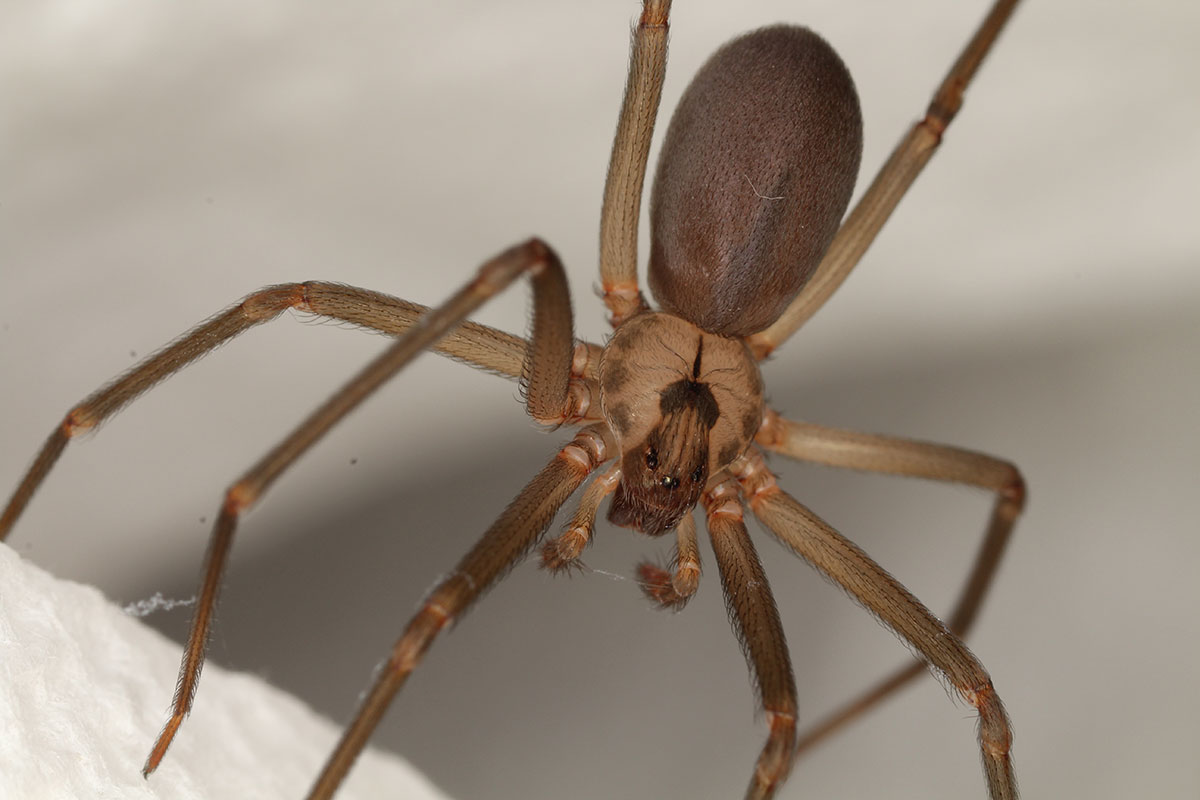Small but extremely dangerous for human health, the violin spider is among the species of spiders the most dangerous, present on the Italian territory. In the event of a sting, the violin spider injects a venom which can also have very serious consequences. Characteristics, prevention, symptoms and treatments.
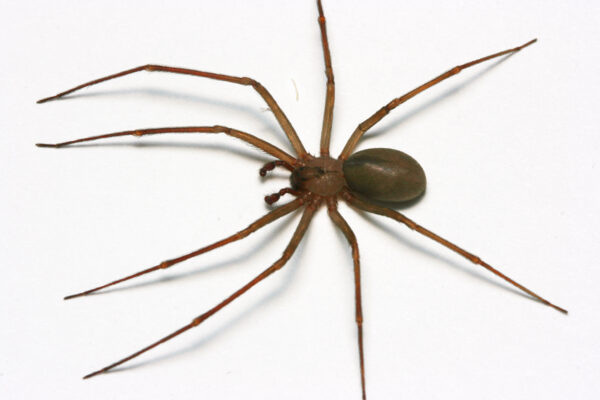
The violin spider it is one of the most dangerous spiders present on our territory. Identified with the scientific term Loxosceles rufescens, the violin spider fears low temperatures. For this reason it tends to take refuge in our homes.
Despite being very small, only a few millimeters in length, it can be very dangerous for humans. Indeed, in case of violin spider bite is critical go immediately at the emergency room, to intervene promptly and avoid potential damage to health.
How to recognize a violin spider? What to do if you notice the presence of a violin spider in the house? How to treat yourself in case of a violin spider bite? We will answer these and other questions in the following article.
Read also: Eliminating spiders in the house: simple and natural remedies
Violin spider: how to recognize it
The violin spider is so called for via the presence of a purple stain present on the back reminiscent of the shape of a violin. Yellowish brown in color, the violin spider is rather small and, depending on whether it is a male or a female, the sizes are different.
Only a few millimeters for the male, while one female violin spider can reach the size from 7 to 9 millimeters. There maximum length that can reach a mature female is about 3-5 centimeters legs included.
The violin spider, moreover, unlike other spider species it has only 6 eyes instead of 8. Under the paws there is one yellowish fuzz. Knowing how to recognize a violin spider is essential to protect yourself in case of accidental contact.
Generally the violin spider has a shy nature and fears the human presence. Indeed, if it senses the presence of man, it runs away, but if you feel threatened or attached defends itself and bites. Through the bite, the spider will fly injects poison into the human body which can also have consequences very serious to health of man.
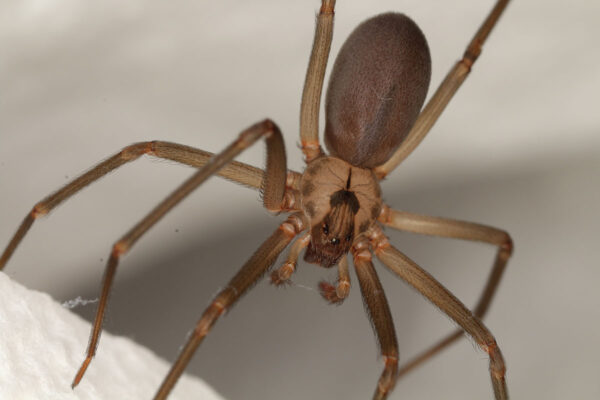
How to act if you notice the presence of the violin spider in the house
The violin spider it’s kind of widespread in many parts of the world, United States, Europe and also Italy. Here I’m in the northern urban areas, but also in the Tyrrhenian areas where the climate is milder. As already mentioned, the violin spider does not like freezing temperatures, but it prefers the hottest areas. For this reason can take refuge in the house to seek a more welcoming environment.
You may be interested in: Ragno floor coverings catalog
In general, the violin spider it is a nocturnal predator. In fact, during the night comes out of its hiding place looking for prey such as insects and dead organisms. For this reason, it is also advisable to prevent the presence of this spider species in the house clean frequently, precisely avoiding the presence of dead insects and therefore food for the violin spider.
Indeed, the violin spider moves frequently just looking for prey to trap in its net and kill them with poison. If you notice in the house of cobwebs of whitish or gray color it is advisable to act with caution and, if necessary, also contact a company specialized in pest control.
Do you want design advice on how to furnish? Join the group
If he goes out in search of food during the night, during the day the violin spider hides under cardboard boxes, behind baskets, in the cracks or in cracks in the wall. Not only that, another hiding place widely used by the violin spider is the linen. For example, he can take refuge in one slipper, in a glove or between the sheets.
Not knowing of its presence in the house, we could accidentally come across a violin spider and if it felt attacked then it could bite us with the consequences for our health that we will see in detail.
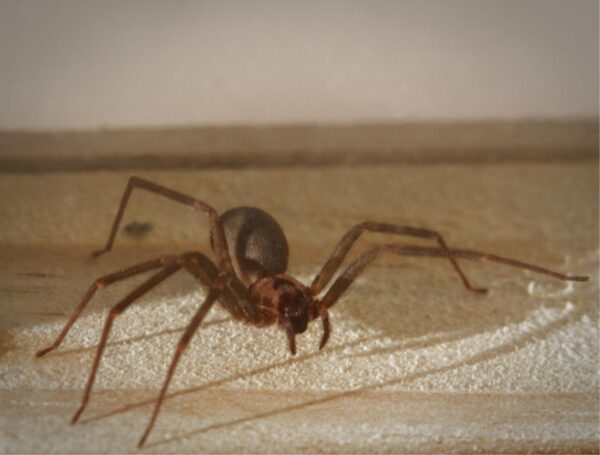
How to disinfect the house from the violin spider: how to prevent
As we have already said, the violin spider infiltrates our homes in search of a more comfortable climate. But its permanence is linked to the presence or absence of prey to eat such as dead insects and microorganisms. For this reason, eliminate the food source for the violin spider it’s a way to flush it out and make him move away. In fact, the violin spider moves very often in search of new prey. A thorough cleaning that avoids the presence of insects it will certainly be useful to prevent it from settling in our home.
Furthermore, preventing the infiltration of the violin spider into our homes is advisable seal the access points used by these arachnids. THE ventilation ducts, the door spaces is windows he spaces under the fittings are some of the entry routes used by spiders.
If you notice the presence of the violin spider, to bring it out into the open is appropriate carry out a treatment with gaseous pyrethroids with very concentrated doses. If on the contrary, spot the violin spider in an easily accessible area it will be enough use the same treatment previous, but spraying it directly on the arachnid.
To avoid taking risks, however, it is better contact a professional specialized in pest control. At the first treatment an aspiration process will have to follow to be sure that the spider has been eliminated and to make sure there are no other specimens in the house.
On aspiration will then have to follow a second treatment with pyrethroids to make sure you eliminate any risk. If you have a garden it is advisable to act with a treatment also for the outside.
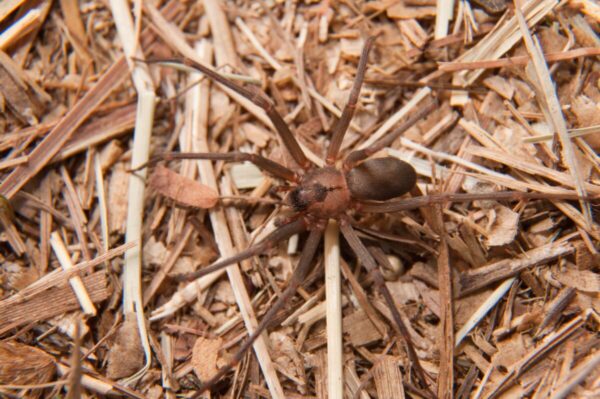
What to do in case of a violin spider bite
The bite or violin spider sting as we have already said it can be very dangerous for human health. For this reason act promptly in the event of a violin spider sting it is essential to avoid very dangerous consequences. Here it is what to do.
- Wash the affected area with soap and water.
- Apply ice.
- Go to an emergency room and if possible, if you can catch the spider even dead, take it with you. It will be useful to better identify the species and then doctors will be able to implement the most suitable therapy.
There violin spider sting is painless. For this reason, very often you do not notice that you have been bitten. Symptoms can arise even after a few hours or even in the following days. So what are the risks you can run?
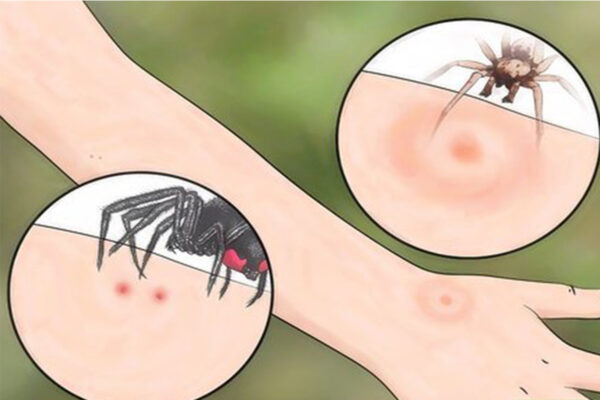
Symptoms and possible treatments
What are the symptoms that can arise after a violin spider bite? They are different and range from simple redness of the sting area to high fever, itch, swelling and burning. These symptoms can occur from a few hours after the violin spider bite to the days immediately following.
What are the health risks which can you run into? There symptomalogy which occurs is defined loxoscelism ed it is classified into four stages depending on the severity.
- Mild, mild symptoms that vanish without special therapies.
- Moderate: itching, swelling and small lesions.
- Escarotic: There may be lesions of the tissues affected by the spider bite that could take up to months to heal.
- Systemic. It is the most serious form that can lead in some cases to permanent and lethal damage.
In the most serious cases, if not properly treated, it can even lead to the death of the patient. For this reason, be very careful.
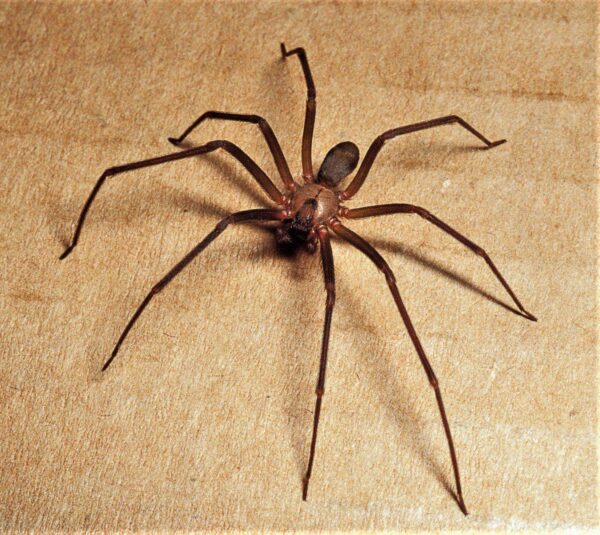
Violin spider: photos and pictures
The violin spider can be very dangerous for human health. Browse the gallery and find out how it is done to recognize it in case of accidental contact.
Small but extremely dangerous for human health, the violin spider is among the species of spiders the most dangerous, present on the Italian territory. In the event of a sting, the violin spider injects a venom which can also have very serious consequences. Characteristics, prevention, symptoms and treatments.

The violin spider it is one of the most dangerous spiders present on our territory. Identified with the scientific term Loxosceles rufescens, the violin spider fears low temperatures. For this reason it tends to take refuge in our homes.
Despite being very small, only a few millimeters in length, it can be very dangerous for humans. Indeed, in case of violin spider bite is critical go immediately at the emergency room, to intervene promptly and avoid potential damage to health.
How to recognize a violin spider? What to do if you notice the presence of a violin spider in the house? How to treat yourself in case of a violin spider bite? We will answer these and other questions in the following article.
Read also: Eliminating spiders in the house: simple and natural remedies
Violin spider: how to recognize it
The violin spider is so called for via the presence of a purple stain present on the back reminiscent of the shape of a violin. Yellowish brown in color, the violin spider is rather small and, depending on whether it is a male or a female, the sizes are different.
Only a few millimeters for the male, while one female violin spider can reach the size from 7 to 9 millimeters. There maximum length that can reach a mature female is about 3-5 centimeters legs included.
The violin spider, moreover, unlike other spider species it has only 6 eyes instead of 8. Under the paws there is one yellowish fuzz. Knowing how to recognize a violin spider is essential to protect yourself in case of accidental contact.
Generally the violin spider has a shy nature and fears the human presence. Indeed, if it senses the presence of man, it runs away, but if you feel threatened or attached defends itself and bites. Through the bite, the spider will fly injects poison into the human body which can also have consequences very serious to health of man.

How to act if you notice the presence of the violin spider in the house
The violin spider it’s kind of widespread in many parts of the world, United States, Europe and also Italy. Here I’m in the northern urban areas, but also in the Tyrrhenian areas where the climate is milder. As already mentioned, the violin spider does not like freezing temperatures, but it prefers the hottest areas. For this reason can take refuge in the house to seek a more welcoming environment.
You may be interested in: Ragno floor coverings catalog
In general, the violin spider it is a nocturnal predator. In fact, during the night comes out of its hiding place looking for prey such as insects and dead organisms. For this reason, it is also advisable to prevent the presence of this spider species in the house clean frequently, precisely avoiding the presence of dead insects and therefore food for the violin spider.
Indeed, the violin spider moves frequently just looking for prey to trap in its net and kill them with poison. If you notice in the house of cobwebs of whitish or gray color it is advisable to act with caution and, if necessary, also contact a company specialized in pest control.
Do you want design advice on how to furnish? Join the group
If he goes out in search of food during the night, during the day the violin spider hides under cardboard boxes, behind baskets, in the cracks or in cracks in the wall. Not only that, another hiding place widely used by the violin spider is the linen. For example, he can take refuge in one slipper, in a glove or between the sheets.
Not knowing of its presence in the house, we could accidentally come across a violin spider and if it felt attacked then it could bite us with the consequences for our health that we will see in detail.

How to disinfect the house from the violin spider: how to prevent
As we have already said, the violin spider infiltrates our homes in search of a more comfortable climate. But its permanence is linked to the presence or absence of prey to eat such as dead insects and microorganisms. For this reason, eliminate the food source for the violin spider it’s a way to flush it out and make him move away. In fact, the violin spider moves very often in search of new prey. A thorough cleaning that avoids the presence of insects it will certainly be useful to prevent it from settling in our home.
Furthermore, preventing the infiltration of the violin spider into our homes is advisable seal the access points used by these arachnids. THE ventilation ducts, the door spaces is windows he spaces under the fittings are some of the entry routes used by spiders.
If you notice the presence of the violin spider, to bring it out into the open is appropriate carry out a treatment with gaseous pyrethroids with very concentrated doses. If on the contrary, spot the violin spider in an easily accessible area it will be enough use the same treatment previous, but spraying it directly on the arachnid.
To avoid taking risks, however, it is better contact a professional specialized in pest control. At the first treatment an aspiration process will have to follow to be sure that the spider has been eliminated and to make sure there are no other specimens in the house.
On aspiration will then have to follow a second treatment with pyrethroids to make sure you eliminate any risk. If you have a garden it is advisable to act with a treatment also for the outside.

What to do in case of a violin spider bite
The bite or violin spider sting as we have already said it can be very dangerous for human health. For this reason act promptly in the event of a violin spider sting it is essential to avoid very dangerous consequences. Here it is what to do.
- Wash the affected area with soap and water.
- Apply ice.
- Go to an emergency room and if possible, if you can catch the spider even dead, take it with you. It will be useful to better identify the species and then doctors will be able to implement the most suitable therapy.
There violin spider sting is painless. For this reason, very often you do not notice that you have been bitten. Symptoms can arise even after a few hours or even in the following days. So what are the risks you can run?

Symptoms and possible treatments
What are the symptoms that can arise after a violin spider bite? They are different and range from simple redness of the sting area to high fever, itch, swelling and burning. These symptoms can occur from a few hours after the violin spider bite to the days immediately following.
What are the health risks which can you run into? There symptomalogy which occurs is defined loxoscelism ed it is classified into four stages depending on the severity.
- Mild, mild symptoms that vanish without special therapies.
- Moderate: itching, swelling and small lesions.
- Escarotic: There may be lesions of the tissues affected by the spider bite that could take up to months to heal.
- Systemic. It is the most serious form that can lead in some cases to permanent and lethal damage.
In the most serious cases, if not properly treated, it can even lead to the death of the patient. For this reason, be very careful.

Violin spider: photos and pictures
The violin spider can be very dangerous for human health. Browse the gallery and find out how it is done to recognize it in case of accidental contact.

